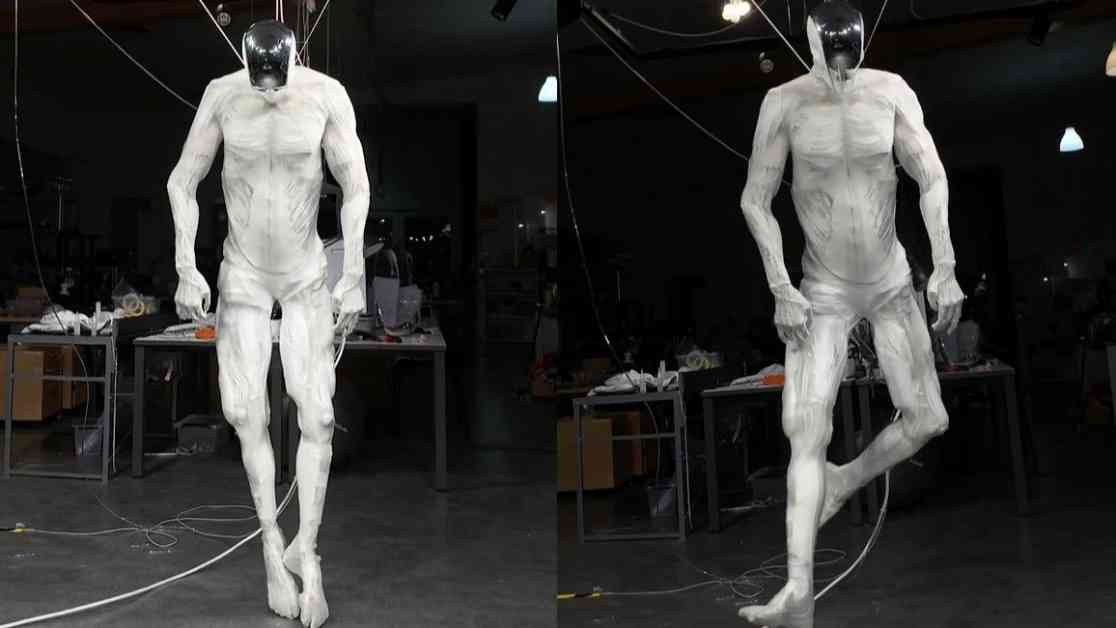The world of robotics is evolving at a rapid pace, with innovative creations pushing the boundaries of what we thought was possible. One such groundbreaking development comes from Polish startup Clone Robotics, who have unveiled the “Protoclone” robot—a humanoid android that has stirred up a storm of controversy on the internet.
The Protoclone is being hailed as the “world’s first bipedal musculoskeletal android,” boasting an eerily lifelike appearance with an anatomically accurate bone structure and musculature. Designed to walk, talk, and perform household tasks, this robot has captured the attention of millions worldwide through a viral video that showcases its capabilities in a mesmerizing display of technology.
In the video, the Protoclone comes to life as it hangs suspended from the ceiling, its limbs twitching and spasming as artificial muscles attached to specific bone points activate, enabling the skeleton to move. With over 200 degrees of freedom, 1,000 Myofibers, and 500 sensors, this synthetic human is a marvel of engineering prowess and technological innovation.
While Clone Robotics celebrates its technological breakthroughs, the response on social media has been nothing short of polarizing. From comparisons to sleep paralysis demons to references to popular sci-fi series like WestWorld, the public’s reactions range from fascination to fear, highlighting the complex emotions stirred by the rise of humanoid robots.
The Rise of Humanoid Robots
According to Clone Robotics’ website, the Protoclone operates with human-like systems, including muscular, skeletal, vascular, and nervous systems. With 206 bones made from polymers connected by artificial muscle fibers, the robot flexes its muscles using a pneumatic system, with plans to transition to hydraulics in the final product. Equipped with sensors and cameras for navigation, this android represents a leap forward in biomimetic design and functionality.
The Protoclone is just one example of the growing interest in humanoid robots within the tech industry. Companies like Figure and Apptronik are also making strides with their own robotic creations, showcasing the potential for these robots to revolutionize industries like manufacturing and logistics. As the boundaries between human and machine blur, the future of robotics looks more promising—and potentially unsettling—than ever before.
Expert Insights
Ben Turner, a U.K.-based staff writer at Live Science, offers a unique perspective on the intersection of technology and society. With a background in particle physics and journalism, Turner brings a well-rounded view to the discussion of humanoid robots and their implications for the future. When he’s not delving into the latest scientific advancements, Turner enjoys immersing himself in literature, music, and the strategic challenges of chess.
As we witness the dawn of a new era in robotics, the Protoclone stands out as a symbol of innovation and creativity in the field. Its lifelike appearance and advanced functionality raise intriguing questions about the role of robots in our society, sparking conversations about ethics, technology, and the human-machine interface. Whether we embrace these robots with open arms or view them with skepticism, one thing is certain—the age of humanoid robots is upon us, and the possibilities are as endless as they are unsettling.










